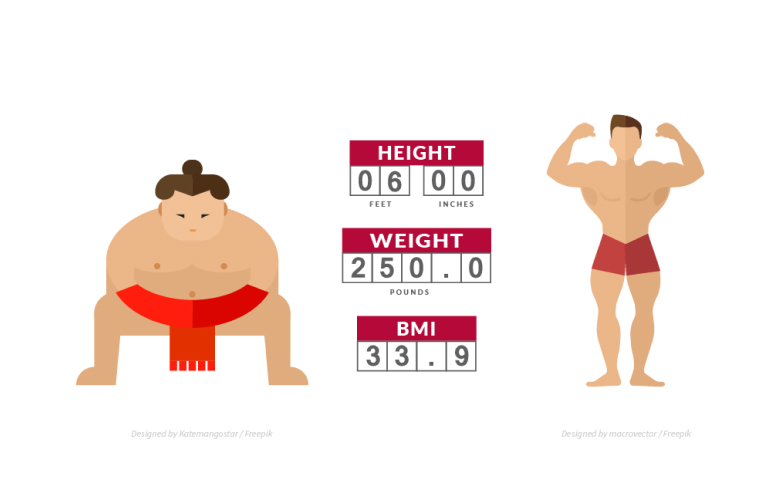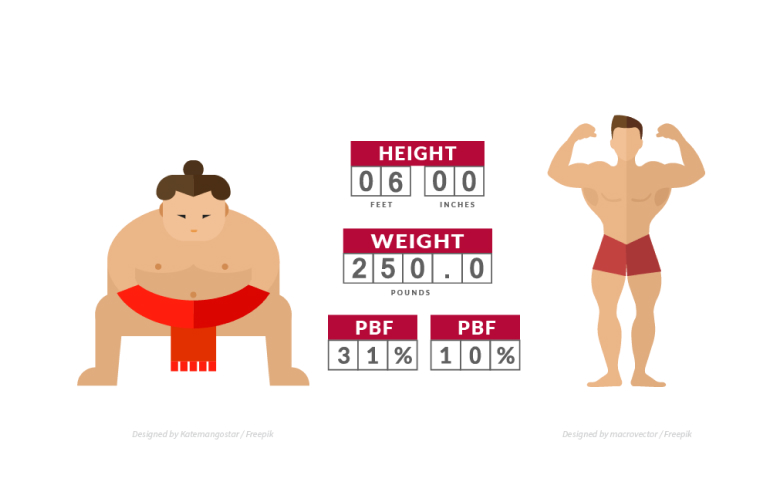What is Body Composition
Body composition is a method of describing what the body is made of.
What is body composition?
Body composition is a method of describing what the body is made of. It includes fat, protein, minerals and body water. It also describes weight more accurately than BMI. Body composition analysis can accurately show changes in fat mass, muscle mass, and body fat percentage. This can help validate services like personal training, patient care, and corporate wellness.
The Modern Assessment of Health
When you’re thinking of losing weight or simply want to see how healthy you are, you probably do one of two things: step on a scale or calculate your BMI. But the truth is, these methods don’t tell you anything about how healthy you are– all weight and BMI does is compare how heavy you are to a standard that doesn’t fit your individual goals.
When you’re trying to get healthier, you’re most likely going to lose fat and (hopefully) gain muscle. But BMI and weight don’t differentiate between muscle and fat. So how can you? Through body composition analysis.
Body composition analysis is a method of describing what the body is made of, differentiating between fat, protein, minerals, and body water to give you a snapshot of your health. InBody is in the business of body composition analysis, and we’re here to teach you the importance of it today’s day and age to help you reach your health goals from the inside out.

What is body composition?
Body composition is used to describe the percentages of fat, bone, water, and muscle in human bodies. Two people of same sex and body weight may look completely different from each other because they have a different body composition.
Body composition and growth are key components of health in both individuals and populations. The ongoing epidemic of obesity in children and adults has highlighted the importance of understanding body fat levels for short-term and long-term health. However, other components of body composition also influence health outcomes, and its measurement is increasingly valuable in clinical practice.
These women are all professional athletes at their peak. Though the scale and BMI may say they’re overweight or even underweight, they’re actually at the prime of their performance.


Why do you need to differentiate between muscle and fat?
Health practitioners universally agree that too much fat is a serious health risk. Problems such as hypertension, elevated blood lipids (fats and cholesterol), diabetes mellitus, cardiovascular disease, respiratory dysfunction, gallbladder disease, and a myriad of other health problems are all related to obesity.
The ongoing epidemic of obesity in children and adults has highlighted the importance of knowing a person’s body fat for short-term and long-term health. An important part of understanding a user’s health is differentiating between what is healthy and what is not, especially when it comes to fat.
It’s common to assume that having as little fat as possible is healthy. However, being thin does not automatically reduce one’s health risk. Being thin refers to weighing less than the recommended values in age-height-weight tables. Leanness, however, refers to the muscle, bone, and fat composition of one’s body weight. Being lean intrinsically indicates greater muscle mass development than thin.
Understanding the differences between thinness, leanness, overweight, and obesity is important for health practitioners to:
Provide baseline data for nutrition counseling and treatment of obesity
Develop complete physical fitness profiles for clients
Monitor body fat loss and muscle growth due to exercise/diet
Describe changes due to growth, development, maturation, and aging
So how are you measuring health?

BMI is an outdated method
Body Mass Index (BMI) is a common method used to assess the health of an individual by comparing the amount of weight they carry to the height of the individual. In its most basic sense, BMI may be useful for identifying those who are at an increased health risk as a result of excess fat accumulation. Despite the widespread use of BMI in clinical practice, BMI has many limitations and is a poor tracking tool for weight change because there’s no way to identify if changes in your weight are in fat or muscle. That’s because BMI is calculated simply by dividing a person’s weight in kilograms by their height: BMI = kg/m2 Predicting health or mortality using a single number such as BMI oversimplifies health risks and ignores important factors that contribute to positive health. Newer technologies are able to separate body weight into specific components that can be examined separately, like DSM-BIA.

Focus on body fat percentage instead
As you move away from BMI, you should focus on the percentage of body fat you have at your weight. At InBody, we call this PBF (percent body fat).
There is no consensus on what the best body fat level for health (the amount of fat storage that maximizes health by minimizing risk for adverse health states/conditions) is for the general population.
The normal body fat range provided by InBody is set at 10-20% for males (15% as ideal) and 18-28% for females (23% as ideal).
